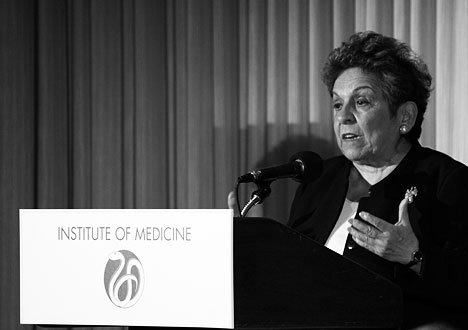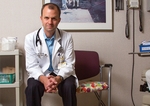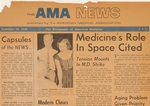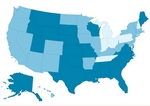profession

IOM urges greater role for advanced-practice nurses
■ Physician organizations quickly counter that patients benefit most when doctors have the central responsibility in delivering care.
By Kevin B. O’Reilly — Posted Oct. 20, 2010
- WITH THIS STORY:
- » Related content
The Institute of Medicine released a report in October recommending that states and the federal government work to remove legal barriers that prevent advanced-practice nurses from practicing "to the full extent of their education and training so that more patients may benefit."
Nursing organizations hailed the report, but the recommendations prompted a swift response from physician organizations, which said optimal patient care depends on doctors playing a central role.
Fifteen states allow APNs to practice independently of physicians. But most states require close doctor supervision under written arrangements for nurses who want to diagnose, treat and prescribe medications or tests for patients, according to research cited in the IOM report, "The Future of Nursing: Leading Change, Advancing Health" (link).
These state regulations impede the ability of more than 250,000 APNs -- nurse practitioners, clinical nurse specialists, certified registered nurse anesthetists and certified nurse midwives -- to help fill the care gap left by the physician work force shortage, the report said.
"We're training nurses better, and for wider responsibilities," said Donna E. Shalala, PhD, the Clinton-era Dept. of Health and Human Services secretary who headed the IOM panel that produced the report. "We've got to make sure, not simply as members of state legislatures but also as health care institutions, that we not restrict their ability to practice to their skill level and educational level.
"This is not about one profession substituting for another," said Shalala, now president of the University of Miami. "This is about a collaborative effort among those who represent medicine in this country to make it better and to improve outcomes for every patient and every American family."
The federal government should use mechanisms such as the Federal Trade Commission, the Centers for Medicare & Medicaid Services and the Federal Employees Health Benefits Program to investigate potentially anti-competitive physician-supervision requirements and expand nurses' independent scope of practice, said the 18-member expert panel composed of six nurses, four physicians and eight others.
"No substitute for education"
With shortages of physicians and nurses plaguing the U.S. health system, the country needs a "physician-led team approach to care," said Rebecca J. Patchin, MD, immediate past chair of the American Medical Association's Board of Trustees.
"Nurses are critical to the health care team, but there is no substitute for education and training," said Dr. Patchin, an anesthesiologist and pain management specialist in Loma Linda, Calif. "Physicians have seven or more years of postgraduate education and more than 10,000 hours of clinical experience. Most nurse practitioners have just two to three years of postgraduate education and less clinical experience than is obtained in the first year of a three-year medical residency. These additional years of physician education and training are vital to optimal patient care, especially in the event of a complication or medical emergency."
The American Academy of Family Physicians also took issue with the IOM report's recommendations.
States that require close physician supervision of APNs are looking out for patients' best interests, said James Hinsdale, MD, president of the California Medical Assn.
"California law requires a team approach in medicine in which doctors and nurses work together," he said. "We are proud of that collaboration and believe it creates the best environment for patients. The law also requires physicians to supervise nurses when they perform certain tasks, and that's important to ensure patients receive high-quality care."
The IOM report also calls for more nursing educational opportunities that are better integrated with the training of physicians and other health professionals.












